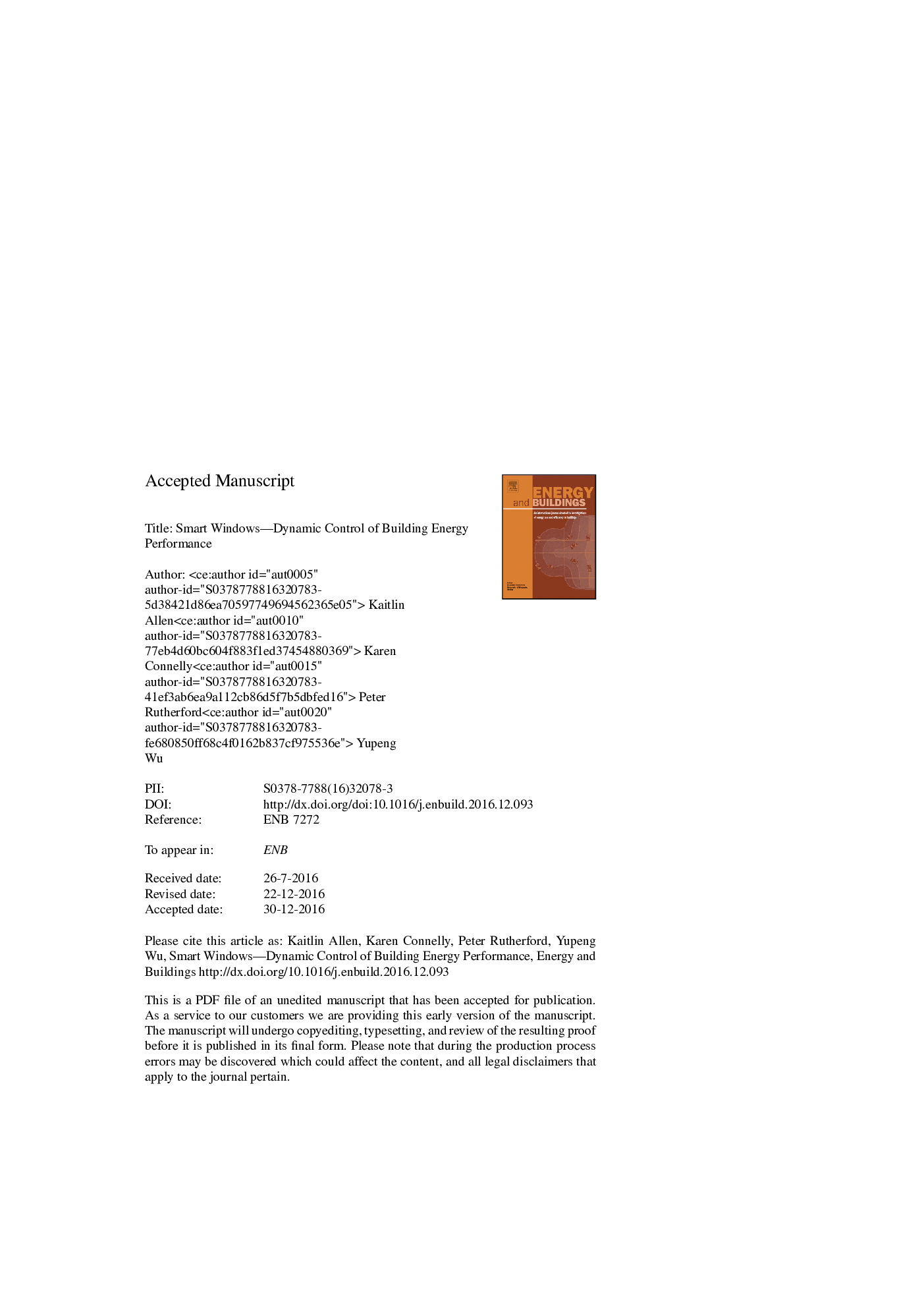| کد مقاله | کد نشریه | سال انتشار | مقاله انگلیسی | نسخه تمام متن |
|---|---|---|---|---|
| 4919347 | 1428951 | 2017 | 49 صفحه PDF | دانلود رایگان |
عنوان انگلیسی مقاله ISI
Smart windows-Dynamic control of building energy performance
ترجمه فارسی عنوان
پنجره هوشمند - کنترل پویا از عملکرد انرژی ساختمان
دانلود مقاله + سفارش ترجمه
دانلود مقاله ISI انگلیسی
رایگان برای ایرانیان
کلمات کلیدی
موضوعات مرتبط
مهندسی و علوم پایه
مهندسی انرژی
انرژی های تجدید پذیر، توسعه پایدار و محیط زیست
چکیده انگلیسی
This paper explores the potential of thermotropic (TT) windows as a means of improving overall building energy performance. Capitalising on their ability to dynamically alter solar and visible light transmittance and reflectance based on window temperature, they have the ability to reduce solar heat gains and subsequently reduce cooling loads when the external conditions exceed those required for occupant comfort. Conversely when the external conditions fall short of those required for comfort, they maintain a degree of optical transparency thus promoting opportunities afforded by passive solar gains. To test their overall effectiveness, thermotropic layers made of varying hydroxypropyl cellulose (HPC) concentrations (2 wt.%, 4 wt.% and 6 wt.%) were firstly synthesised and their optical properties measured. Building performance predictions were subsequently conducted in EnergyPlus for four window inclinations (90°, 60°, 30° and 0° to the horizontal) based on a small office test cell situated in the hot summer Mediterranean climate of Palermo, Italy. Results from annual predictions show that both incident solar radiation and outdoor ambient temperature play a significant role in the transmissivity and reflectivity of the glazing unit. If used as a roof light, a 6 wt.% HPC-based thermotropic window has a dynamic average Solar Heat Gain Coefficient (SHGC) between 0.44 and 0.56, this lower than that of 0.74 for double glazing. Predictions also show that in the specific case tested, the 6 wt.% HPC-based thermotropic window provides an overall annual energy saving of 22% over an equivalent double glazed unit. By maintaining the thermotropic window spectral properties but lowering the associated transition temperature ranges, it was found that the lowest temperature range provided the smallest solar heat gains. Although, this is beneficial during periods where cooling may be needed, in those periods where heating may be required, opportunities gained through passive solar heating are limited. In addition, with lower solar heat gain, there is a possibility that artificial lighting energy demand increases resulting in additional energy consumption.
ناشر
Database: Elsevier - ScienceDirect (ساینس دایرکت)
Journal: Energy and Buildings - Volume 139, 15 March 2017, Pages 535-546
Journal: Energy and Buildings - Volume 139, 15 March 2017, Pages 535-546
نویسندگان
Kaitlin Allen, Karen Connelly, Peter Rutherford, Yupeng Wu,
